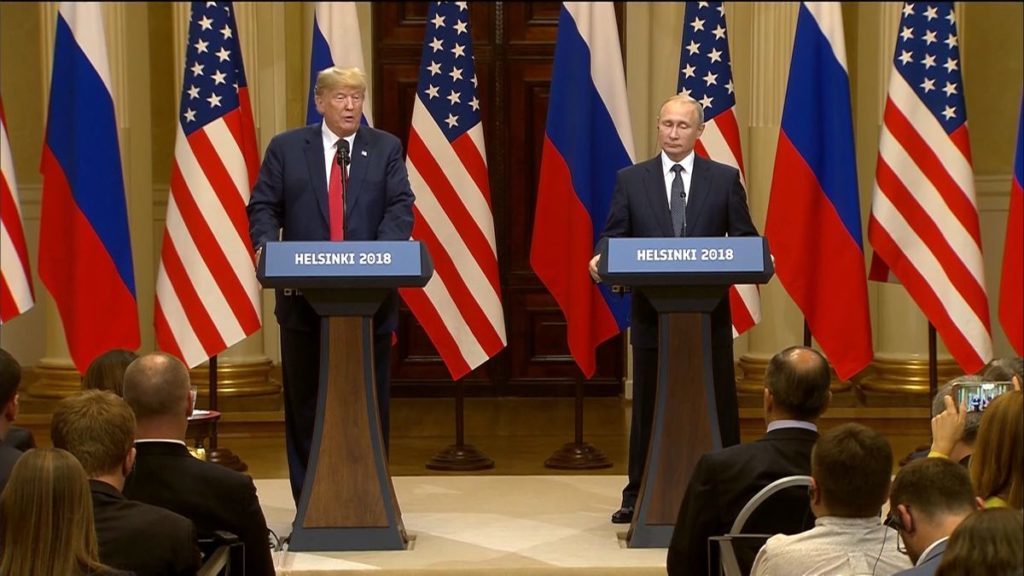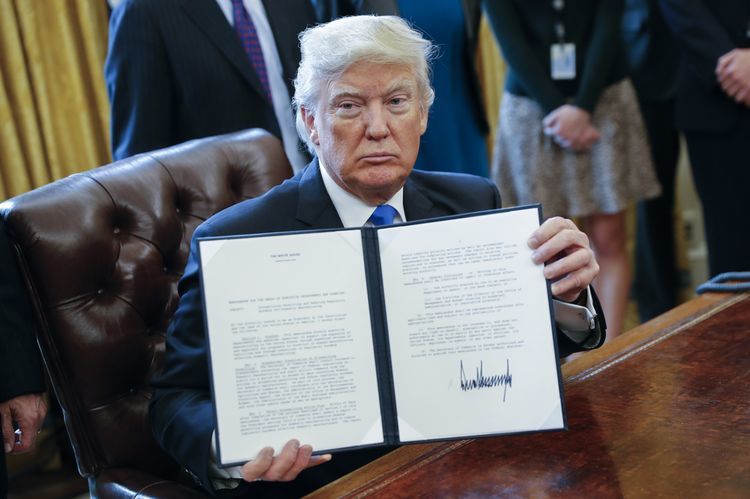
U.S. President Donald Trump eased his tone about a Russian natural gas pipeline to Germany after a one-on-one meeting with President Vladimir Putin, shifting from the harsh criticism he’d levied in Europe last week.
“We are going to be selling LNG and will have to be competing with the pipeline and I think we’ll compete successfully, although there is a little advantage locationally” because Russia is closer to buyers in Europe, Trump told reporters at a news conference with Putin after their meeting in Helsinki on Monday. “I’m not sure necessarily that it’s in the best interest of Germany or not but that was the decision that they made.”
The Nord Stream 2 pipeline, which would double Russia’s current capacity to deliver natural gas direct to Germany under the Baltic Sea and circumvent Ukraine, a major supply route to the European Union, has been a sore point between the U.S. and its allies over the past months. Last week, Trump slammed what he called German dependence on Russian energy, saying it made the nation “captive” to Moscow. The Kremlin said Trump’s attacks were economically motivated and an attempt to promote U.S. liquefied natural gas in Europe.
Also see: In an age of Trump and Putin, Europe faces hard choices on gas
Trump last year signed a law giving him the right to sanction companies involved in the Nord Stream 2 pipeline project. Royal Dutch Shell Plc, BASF SE’s Wintershall unit, Uniper SE, OMV AG and Engie SA have agreed to provide Russia’s Gazprom PJSC with financing for the 9.5 billion euro ($11 billion) pipeline and could be at risk of penalties.
“I called him a competitor and a good competitor he is,” Trump said of Putin on Monday. “I think the word ‘competitor’ is a compliment.”
Putin said he sees space for cooperation with the U.S. on energy, while saying Russia may be willing to extend gas transit accords with Ukraine if the two nations’ state companies can resolve legal disputes about fees and pricing.
Europe is poised to become more reliant on gas imports as output from the Groningen field in the Netherlands, the continent’s largest, winds down.
The continent must “establish very, very solid relationships” with any countries that can provide gas at an affordable price with the appropriate services and “without any political strings attached,” Maros Sefcovic, vice president of the European Commission’s Energy Union, said at the World Gas Conference in Washington last month.
But Europe may have difficulty attracting gas cargoes from overseas, given higher prices in Asia. The WGI spot LNG assessment for Northeast Asia was $10.30 per million British thermal units on July 9, while U.K.’s National Balancing Point gas futures traded at $7.50 on Monday.
Longer term, gas export project developers in the lower 48 states may face delays as they wait for regulatory approval. Sefcovic called the U.S. approval process “redundant” and said it needed to be revamped.
Gazprom is Europe’s largest gas supplier and provides more than a third of the region’s needs in the fuel. Its chief executive officer, Alexey Miller, confirmed in June its plan to start laying the pipes in the next couple of months and to open the Nord Stream 2 link by late-2019. The project would cut Russia’s dependence on Ukraine and help meet additional demand for the fuel in the EU in next two decades as local production falls.
Meanwhile, Russia is unperturbed by the prospect of American LNG supplies to Europe. They “will never catch up with and will never surpass” Russian gas exports to the region, Miller said in June.
Recommended for you
